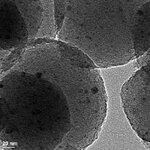Energy

Microbes that break down oil and petroleum are more diverse than we thought, suggesting hydrocarbons were used as an energy source early in Earth's history, according to a presentation at the Society for General Microbiology's Autumn meeting.
These microbes can change the composition of oil and natural gas and can even control the release of some greenhouse gases. Understanding the role of microbes in consuming hydrocarbons may therefore help us access their role in the natural control of climate change.
"Hydrocarbons like oil and natural gas are made up of carbon and hydrogen, they are…

Bacteria found in compost heaps able to convert waste plant fibre into ethanol could eventually provide up 10% of the UK's transport fuel needs, scientists heard at the Society for General Microbiology's Autumn meeting.
Researchers from Guildford, UK, have successfully developed a new strain of bacteria that can break down straw and agricultural plant waste, domestic hedge clippings, garden trimmings and cardboard, wood chippings and other municipal rubbish to convert them all into useful renewable fuels for the transport industry.
"The bioethanol produced in our process can be blended with…

Hydrogen will be one of the most important fuels of the future, if it can be obtained by efficiently splitting water. Today the electrolysis of water is a very energy intensive process, making it both expensive and unsustainable if the electricity necessary to generate it comes from the burning of fossil fuels anyway.
Photolysis, the splitting of water by light, is a highly promising alternative. A team of Australian and American researchers has now developed a catalyst that effectively catalyzes one of the necessary half reactions, the photooxidation of water. As it reports in the journal…

A group of University of Oklahoma researchers studying the environmental fate of petroleum spills have in the process isolated a community of microorganisms capable of converting hydrocarbons into natural gas.
The researchers found that the process known as anaerobic hydrocarbon metabolism can be used to stimulate methane gas production from older, more mature oil reservoirs like those in Oklahoma. The work has now led to the recognition that similar microorganisms may also be involved in problems ranging from the deterioration of fuels to the corrosion of pipelines.
A new OU initiative led…

With oil prices skyrocketing, the search is on for efficient and sustainable biofuels. Research published this month in Agronomy Journal examines one biofuel crop idea, the corn stover made up of the leaves and stalks of corn plants that are left in the field after harvesting the edible corn grain. Corn stover could supply as much as 25% of the biofuel crop needed by 2030, according to some estimates.
Scientists with the USDA-ARS Agroecosystem Unit located at the University of Nebraska examined the long-term sustainability of using corn stover as a biofuel crop. They note when corn stover…

An international team of researchers led by Monash University has used chemicals found in plants to replicate a key process in photosynthesis paving the way to a new approach that uses sunlight to split water into hydrogen and oxygen.
The breakthrough could revolutionise the renewable energy industry by making hydrogen – touted as the clean, green fuel of the future – cheaper and easier to produce on a commercial scale.
Professor Leone Spiccia, Mr Robin Brimblecombe and Dr Annette Koo from Monash University teamed with Dr Gerhard Swiegers at the CSIRO and Professor Charles Dismukes at…

Scientists at Michigan State University have identified a new protein necessary for chloroplast development that they say could ultimately lead to plant varieties tailored specifically for biofuel production.
Chloroplasts, which are specialized compartments in plant cells, convert sunlight, carbon dioxide and water into sugars and oxygen ("fuel" for the plant) during photosynthesis. The newly discovered protein, trigalactosyldiacylglycerol 4, or TGD4, offers insight into how the process works.
"Nobody knew how this mechanism worked before we described this protein," said Christoph Benning,…

One way to help save the world is to buy a Prius for $20,000 but the fact remains that it still uses gas.
The next vehicle in line, which crosses the half-way point between gas and electric, is the PHEV. The vehicle has a bigger electrical engine meaning it is more efficient because of its capability to use more electricity. In addition, the consumer will have the option to choose not to use gas.
At the U.C Davis Institute of Transportation Studies Tom Turrentine, director of the Plug-in Hybrid Electric Vehicle (PHEV) research center looks at the influence of transportation on society. More…

An automobile powered by petroleum on the freeway and by electricity in town uses considerably less energy. A hybrid propulsion system that switches over to generator operation when the brakes go on, producing electric current that is temporarily stored in a battery, yields tremendous savings, particularly in urban traffic.
But up to now, hybrid technology has always had a storage problem. Scientists from three Fraunhofer Institutes are developing new storage modules in a project called "Electromobility Fleet Test."
The pilot project was launched by Volkswagen and Germany's Federal Ministry…

Biofuels are a bad word these days, due to the fact that everyone from Al Gore to George Bush thought ethanol was a good idea due to a lack of understanding actual science much less basic economics.
But before grain ethanol and biodiesel there was 'gasification' and it's getting a new look from researchers at the U.S. Department of Energy's Ames Laboratory and Iowa State University.
By combining gasification with high-tech nanoscale porous catalysts, they hope to create ethanol from a wide range of biomass, including distiller's grain left over from ethanol production, corn stover from the…